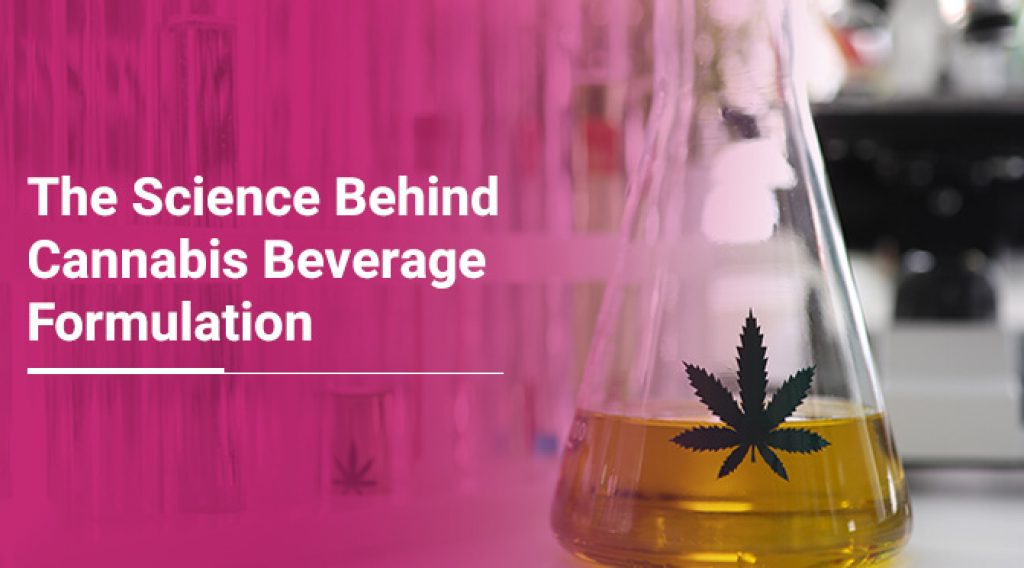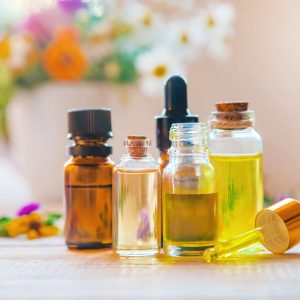As legislation around cannabis and hemp loosens, products containing cannabidiol (CBD) and tetrahydrocannabinol (THC) rise in demand. Some of the cannabis-infused products that see the most demand are beverages.
Many appreciate THC- and CBD-infused beverages for their potential medicinal benefits. Others drink cannabis milk as a gluten-free, dairy-free alternative. Brewing companies develop CBD-infused beers that yield a unique taste and reported relaxing effects. Some use THC-infused beverages recreationally in states where it’s legal.
In all cases, ingesting THC or CBD as a drink is a socially acceptable alternative to smoking or vaping for many consumers. Businesses are finding opportunities to develop unique drinks that fill the need.
Any beverage entrepreneur interested in producing a CBD or THC drink should consider the science behind the products. This article discusses the ingredients and processes that go into CBD and THC beverage development.
CBD and THC Beverage Ingredients
CBD and THC beverages contain various ingredients. The most prominent, of course, are CBD and THC.
CBD and THC are cannabinoids or chemicals found in cannabis that release neurotransmitters in the brain.
Adding these cannabinoids to a beverage will yield relaxing effects, reduce anxiety or ease pain. Both cannabinoids affect mood, sleep, pain and memory.
THC
Today, the demand for food and beverage products containing THC is growing. THC is a psychoactive compound that produces the feeling of being “high.”
The amount of THC a product contains depends on the version of the cannabis plant used in its production.
There are two common variations of cannabis that differ in THC level. A cannabis plant with less than 0.3% THC content is considered hemp. A cannabis plant with more than 0.3% THC content is considered marijuana.
CBD
Hemp and marijuana both contain CBD as well. CBD is still a popular ingredient, although its effects are more subtle.
Many CBD drinks feature additional plant-based ingredients to augment the cannabinoid’s effects. Common plant-based additions include L-theanine, mushroom extracts, turmeric and ashwagandha.
Additional Ingredients
A successful cannabinoid beverage needs other elements that enhance the experience. Beverage developers add ingredients like sweeteners and bitter maskers to control the bitter taste that cannabinoids often feature. Other elements like flavors and carbonation may go into the drink for sensory control.
Get in Touch With a Beverage Expert Now
The Challenge Associated With CBD and THC Beverage Ingredients
The high demand for CBD and THC products is causing the market to become saturated with companies eager to capitalize. However, as more beverage industry entrepreneurs enter the market, the present legal landscape leads to bottlenecks.
Hemp became federally legal to produce through the Agriculture Improvement Act of 2018. However, while several states have also passed laws legalizing CBD, products containing this compound are technically illegal at the federal level under the Federal Food, Drug and Cosmetic Act (FDCA). This includes the use of CBD in beverages.
Similarly, THC from cannabis is still federally illegal, yet more than 30 states allow its sale and consumption.
In order to mass-produce cannabis beverages, there must be a sufficient number of beverage production facilities licensed for cannabis. But, the current volatile state of cannabis regulations complicates the process of acquiring licenses for cannabis beverage production.
Additionally, the facilities that have the necessary licenses encounter logistical issues that slow lead times. The production and distribution of cannabis drinks must occur within the same state. Consequently, manufacturers often must implement unique distribution models for cannabis beverages. The production and distribution limitations make it impossible to achieve the economies of scale and associated cost savings that other beverage brands can achieve.
For example, drink manufacturers must contend with creating cannabis beverage packaging styles and THC serving sizes that remain compliant across various states that have different labeling laws and serving size limitations. A recent Minnesota law determined that beverages and edibles may contain no more than 5 milligrams (mg) of THC per serving. Manufacturers who license and sell their cannabis beverages in multiple states have to take steps distinct from traditional beverage-making to avoid going over legal limits, such as offering several formulations.
After production, selling cannabis drinks in retail stores can also prove challenging, as sales are limited to cannabis dispensaries with state licensing. Even then, not all of these dispensaries will sell cannabis drinks due to the expenses involved. Cannabis products are often subject to more intensive requirements that could call for building features like refrigerated storage, complex locking systems or reinforced vault rooms.
CBD Beverage Formulation — How CBD Drinks Are Made
Formulating a CBD or THC drink is a delicate process. For one, cannabinoids go through an extraction process alongside constituents that shouldn’t go in the final formulation. Additionally, cannabinoids are hydrophobic. Distributing a hydrophobic cannabinoid extract evenly through a drink is difficult, so developers struggle to produce consistent batches. Winterization and emulsification solve key formulation challenges.
Winterization
The process of extracting cannabinoids from a cannabis or hemp plant leaves unwanted oils behind. Before an extract can go into a formulation, the unwanted oils need to be removed. Winterization is a purification method that removes unwanted oils.
During winterization, the cannabinoid extract is dissolved in a solvent. The resulting mixture is frozen, which causes the different oils to separate. Developers can then take the refined extract and use it to make the drink.
Emulsification
Greater cannabinoid solubility facilitates consistent beverage production. The most successful solution to cannabinoid hydrophobia is emulsification. Emulsification is a scientific process that transforms hydrophobic cannabinoid extracts into water-soluble concentrates.
During emulsification, the cannabinoid mixes with emulsifier molecules that feature one hydrophilic end and another hydrophobic end. The process shrinks the cannabinoid’s oils into small, water-soluble drops.
After the emulsification process is complete, developers can dilute the cannabinoid emulsion in sugar or acid solutions to produce the final beverage.
CBD Beverage Formulation From MyDrink Beverages
MyDrink Beverages, powered by BevSource, has the expertise to assist with CBD beverage formulation and usher your drink from concept to shelf-ready product. We can help your brand at all stages of growth and take your products to market profitably and efficiently. Chat with one of our CBD beverage formulation specialists now.



